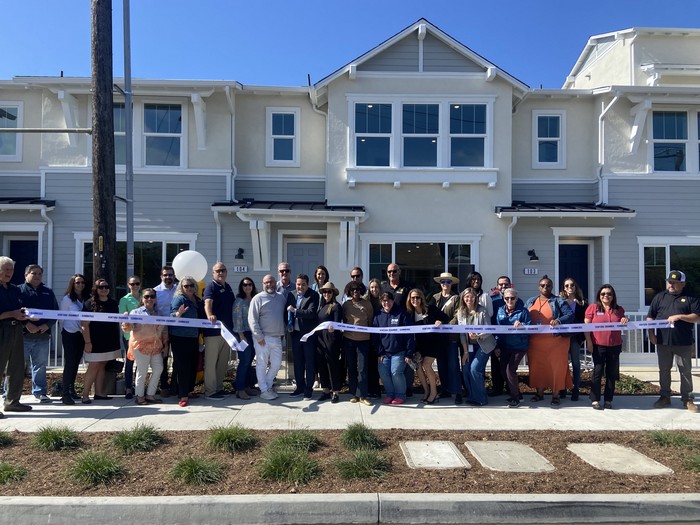 • Medium-sized dogs have a higher risk of developing cancer than the very largest or smallest breeds, according to a UC Riverside study.
• Medium-sized dogs have a higher risk of developing cancer than the very largest or smallest breeds, according to a UC Riverside study.
The study, published in the Royal Society Open Science, set out to test a model of how cancer begins. This model, called the multistage model, predicts that size is a risk factor for cancer. As it turns out, it is, but only when considering size variation within a single species.
It is common for cells to acquire errors or mutations as they divide and form copies of themselves. Bigger animals, and those that live longer, have more cells and a longer lifespan during which those cells divide. According to the multistage model, that means they have more opportunities to acquire mutations that eventually become cancer.
“Testing this in dogs is even better because you can compare a tiny chihuahua to a great Dane. That’s a 35-fold difference in size, and people can’t come close to that,” Nunney said.
Surveying their mortality rates with three different data sets, Nunney found the smallest dogs, including Pomeranians, miniature pinschers, shih tzus and chihuahuas have about a 10% chance of dying from cancer.
By comparison, many relatively large dogs, such as Burmese mountain dogs, have more than a 40% chance of death from cancer.
However, the very largest breeds, such as great Danes, have less cancer than medium-sized breeds. That is because of a well-known but as yet unexplained phenomenon: the life expectancy of dogs gets shorter with size.
“For every pound increase in typical breed size you lose about two weeks of life. A very big dog, you’re lucky if they live past nine years, whereas small dogs can go about 14,” Nunney said. Cancer is predominantly a disease of old age so by having a reduced lifespan the largest dogs have a reduced cancer risk.
• A Texas family was reunited with their dog after three years.
They put up signs and searched for Sam but had no luck. That was until they got what they said was an unbelievable phone call weeks ago.
Two women found Sam at a gas station in Arkansas and then took him to Jacksonville Animal Hospital who was able to contact the animal rescue Sam was adopted from thanks to his microchip.
“It’s such a beautiful story,” Cindy Hall said. “This story just can’t underestimate the power of a microchip. We are so grateful for everyone that was involved.”
Hall said with help Sam was able to be transported back into their arms. “When we got him it was surreal,” Cindy Hall said.
• As a pet owner, it’s natural to be concerned about your furry friend’s health and well-being, but knowing when to seek emergency veterinary care can sometimes be challenging.
To help clarify this, Dr. Lance Wheeler, a clinical assistant professor of emergency and critical care at the Texas A&M School of Veterinary Medicine & Biomedical Sciences, and Wendy Greathouse, a referral coordinator for Texas A&M’s Veterinary Medical Teaching Hospital, provide guidance on identifying and responding to pet emergencies.
According to Wheeler, there are two categories of emergencies.
“There are emergencies that are immediately life-threatening, like being hit by a car, and emergencies that become life-threatening after an unknown period of time, such as ingesting a toxin that doesn’t display symptoms until 48 or 72 hours later,” Wheeler said. “Beyond these two major categories, emergencies will most likely fall under intoxications, trauma, or an underlying condition that will require medical exams to determine what is wrong.”
Life-threatening emergencies require immediate veterinary attention, and getting your pet to the vet as soon as possible can make a significant difference in their chances of survival.
While not every health concern is an emergency, there are urgent medical concerns that can significantly impact a pet’s health. These issues are not usually life-threatening, but prompt veterinary attention also can lead to an improved outcome.
“This could include a fracture or broken bone, which is not usually life-threatening, but if we can get them to a surgeon sooner, the bone might heal better,” Wheeler said. “Other signs of an urgent issue that’s not necessarily life-threatening at the moment include blood in a pet’s urine, vomit, or stool.”
Intoxications occur when pets ingest harmful substances, causing a wide range of symptoms. According to Greathouse, common causes of pet intoxications include being bitten by a snake or ingesting human medications, common household cleaners, holiday foods, spoiled food, or seasonal plants such as lilies, oleanders, and poinsettias.
“Unless instructed otherwise, you should not try to induce vomiting because it can delay veterinary attention and cause injury,” Wheeler said. “Instead, drive your pet to the vet as soon as possible and call either the veterinarian’s office or a pet intoxication hotline on your way so that treatment is not delayed. The pet will have a better chance of survival in almost every scenario if we can get the toxin out of their system sooner.”
Greathouse also recommends having specific information ready when you call.
“Be prepared to provide as much information as you can pertaining to the intoxication, such as what they ingested, how much they ate, the pet’s weight, and what time the incident occurred,” Greathouse shared.
Trauma, on the other hand, can result from various incidents that may lead to burns, wounds, bleeding, or pain. If you witness your pet experiencing trauma or suspect they may have been injured, it’s crucial to seek immediate veterinary care.
“Something as silly as running into a tree or falling a distance as short as one foot and hitting their head could be life-threatening, which is why it is best to visit a veterinarian instead of playing a guessing game with yourself,” Wheeler said. “Just because your pet seems to be looking at you fine and acting normal doesn’t mean they are.”
In some cases, pets can exhibit signs of illness or distress — including an inability to stand or walk, heavy breathing, seizures, vomiting, or abnormal behavior — without a clear cause.
• Dr. Kathleen Aicher, an assistant professor at the Texas A&M School of Veterinary Medicine & Biomedical Sciences, explains why parvovirus is so contagious between dogs, emphasizing the vulnerability of puppies and how crucial vaccinations and treatment are in preventing the infection from spreading.
“Parvovirus is very easily transmitted between dogs because it takes very little exposure to cause infection, and dogs who are infected can shed the virus for a few days before they exhibit symptoms, unknowingly exposing other dogs to the virus,” Aicher said. “The virus is also very resistant to extreme temperatures and cleaning, so it can remain in the environment for a long time, putting dogs at further risk.”













